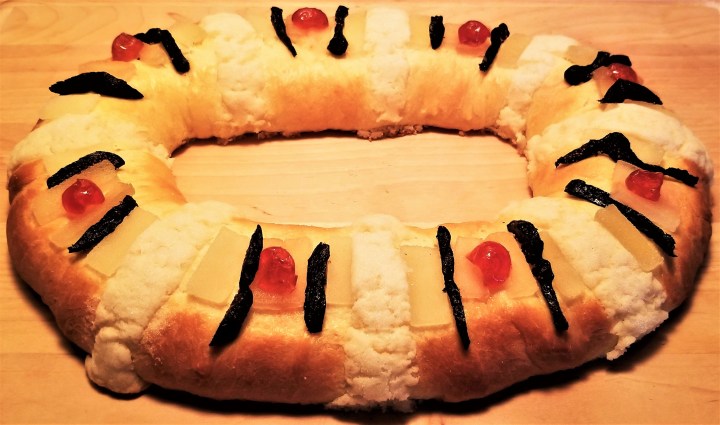
Printable recipe: Epiphany Bread
Last year, I devoted a post to share the history behind the Epiphany bread, with ancient origins from pagan Rome, transformed in medieval times to fit into the Catholic Feast of the Epiphany of the Magi (the revelation to the wise men of baby Jesus as the Saviour), and brought to Mexico from Spain during the colonial era. I also included my recipe and very detailed instructions to prepare the bread; please click here to check that post out, and for a printable recipe, please click here or the highlighted text at the top.
The picture at the top of this post features my 2020 Epiphany bread, which I have baked in advance of the January 6th celebration of The Epiphany of the Magi because my daughters will be back to Toronto on Sunday (January 5th), so this way we can enjoy it before they go, and it will give me a breath before returning to my routine on Monday, as well.
I wanted to highlight two things that are different in my 2020 Epiphany bread from all my previous ones. The first is about the toppings, which include a sweet paste sprinkled with sugar (recipe also included in the link above), and crystallized fruit. The traditional choices used to be figs and acitrón. In Spain, acitrón is crystallized citron (Citrus medica, a large citrus fruit with thick rind, known as cidra in Spanish), but in Mexico – probably from unavailability of citron – acitrón became the crystallized pulp of barrel cacti of the Echinocactus genus, particularly biznaga de azúcar (E. platyacanthus.) In 2005, the Mexican government classified this species as endangered, and restricted its cultivation for controlled harvest to established farms. For this reason, I have been using glazed cherries and crystallized papaya instead, but during a trip to Mexico early last year, I found a package of certified acitrón, vacuum sealed and properly labeled on the front, with a seal of approval on the top left:
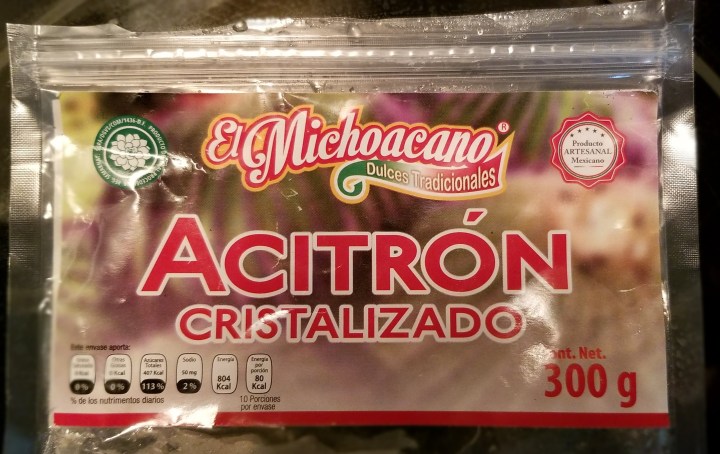
It read “Product with legal origin SEMARNAT (Secretariat of the Environment and Natural Resources) registry SGPA/DGVS/COM/1436-D.F.”:
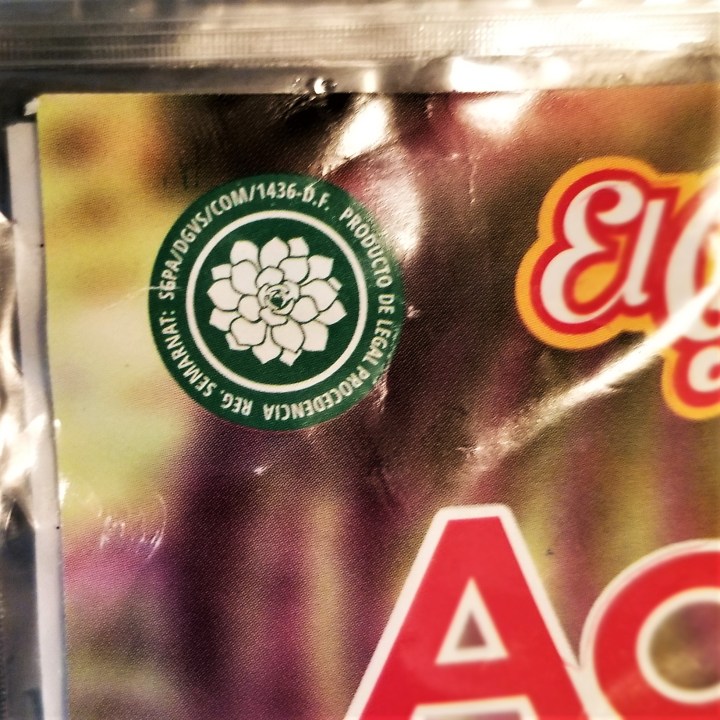
And on the back, the same certification with the motto: “Committed to the care and protection of the species”, and the ingredients listing the cactus as “of legal origin”:

I felt enough confidence to purchase a bag; the pieces of crystallized cactus were like jewels to my eyes, since I had not seen acitrón in years:
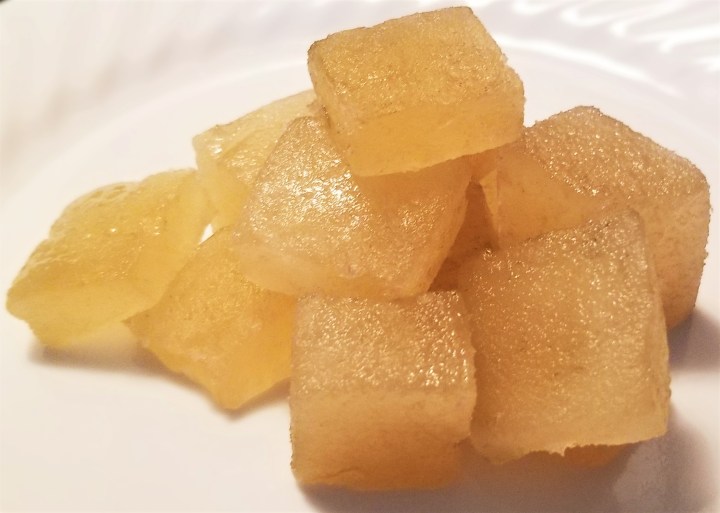
The flavour is mostly neutral and sugary, but the texture is unique: crunchy and spongy at the same time. Since the package had a good quantity and I was not going to use it then, I divided the cubes amongst three sealable bags and stored them in the freezer.
The other thing that was different this year, was related to the small tokens that are traditionally hidden inside the bread. In Spain, finding a dry broad bean or a figurine in one’s portion might be the difference between having to pay for next year’s bread, and owning the kingdom for a day, paper crown included. In Mexico, there are only figurines, representing baby Jesus. Finding the figurine represents the revelation of the baby as the Christ to the wise men, so the lucky person will have the honour to host a party with tamales on February 2nd, marked in the Catholic calendar as Candlemas (día de la Candelaria) and the Presentation of Jesus at the Temple. Nowadays, many breads will have more than one figurine, so the cost of the tamales is shared. Since I could not find figurines in Canada, I have been using whole almonds instead, but again, this year while in Mexico, my sister gave me a small bag with half a dozen baby Jesus figurines.
The differences of add-ins from last year (first photo below: crystallized figs and papaya, glazed cherries and whole almonds) and this year (second photo below: crystallized figs and acitrón, and plastic baby figurines) may be appreciated:
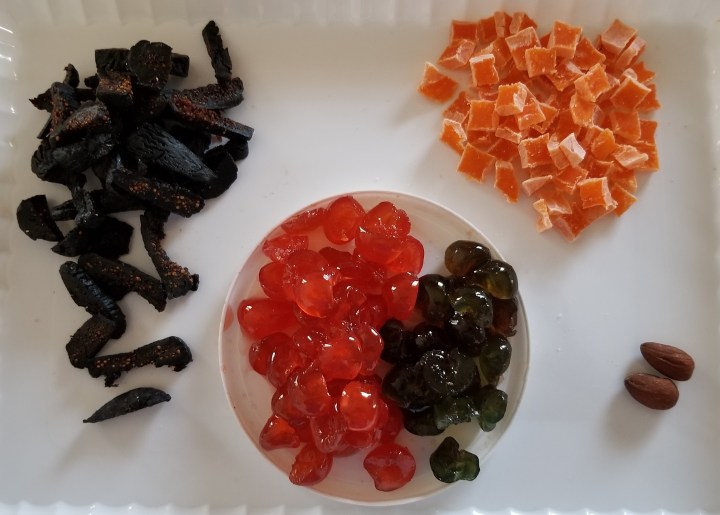
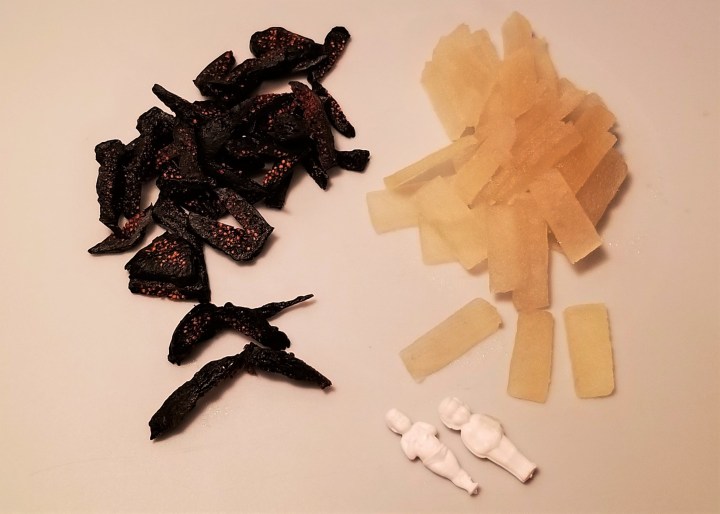
Just from looking at the two photos, with so much more colour and variety in the first one, I was already doubting that the traditional add-ins were the best option. While decorating the rings, my bread looked so plain, that I decided to depart from tradition and add some glazed cherries. Also, since the figurines were plastic (the original ones back in the day, were ceramic), I did not insert them in the bread until after the rings were baked, just to avoid any possible contamination:
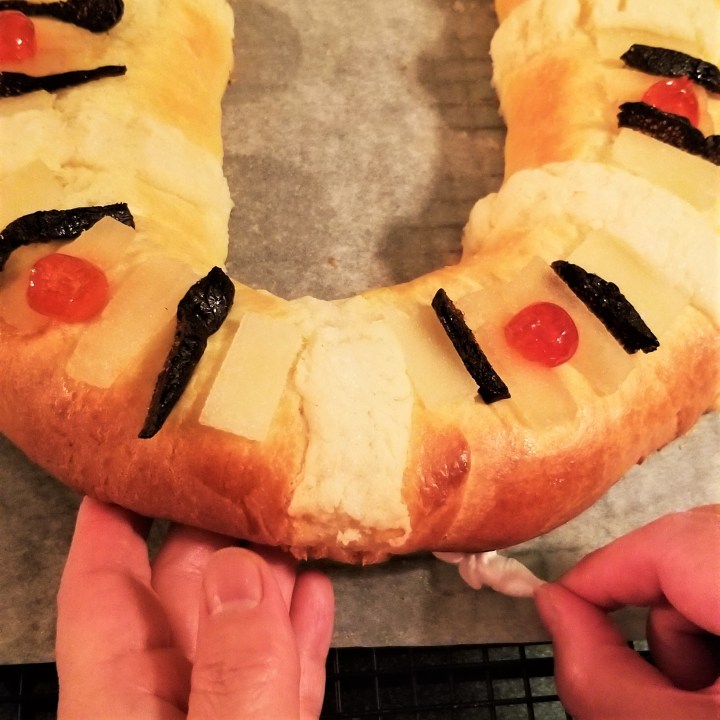
The bread turned out as pretty as always:
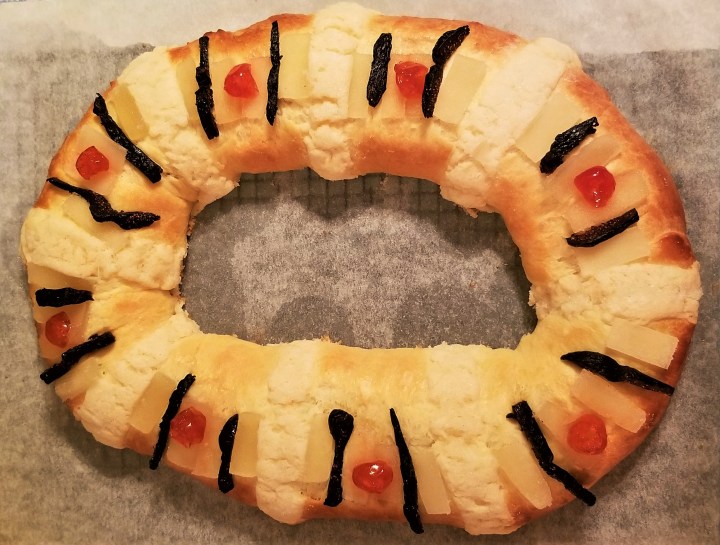
And the crumb was flaky and light:
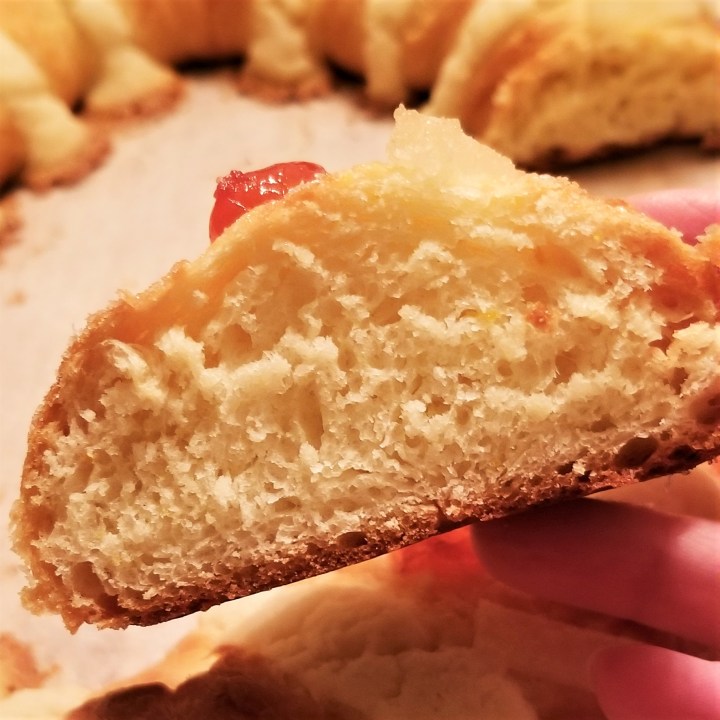
This January 6th, have a wonderful Epiphany Day!
This new year of 2020, I have already learned a couple of things about environmentally sound practices:
- Since the time to maturity for barrel cacti ranges between 14 to 40 years, when the harvest of the biznaga de azúcar is ruined for any reason, some farmers have continued to harvest “mother” plants, even from reserves, killing their roots and reducing the population of the species. It is of the utmost importance to be 100% certain that acitrón comes from legal sources, and it is probably better to avoid purchasing it in bulk or consuming from commercial products without proper labelling and certification:
My bread in previous years has been equally tasty and perhaps prettier with crystallized papaya and glazed cherries instead of acitrón, so maybe it is better to find alternatives altogether. Ate (thick fruit jelly) and crystallized jícama are two being used and explored in Mexico.
- For at least the last five decades, baby figurines for Epiphany bread have been made of plastic; they are often inserted before the end of the baking time, presenting risk of contamination. Also, since many people just purchase the bread at the bakery, the figurines are mostly thrown away after the festivities.
I will keep inserting the figurines after the bread has been baked and cooled down, and will reuse them for as long as possible. Hiding whole almonds is a tasty, environmentally friendly, and safe alternative to avoid waste and choking hazards.

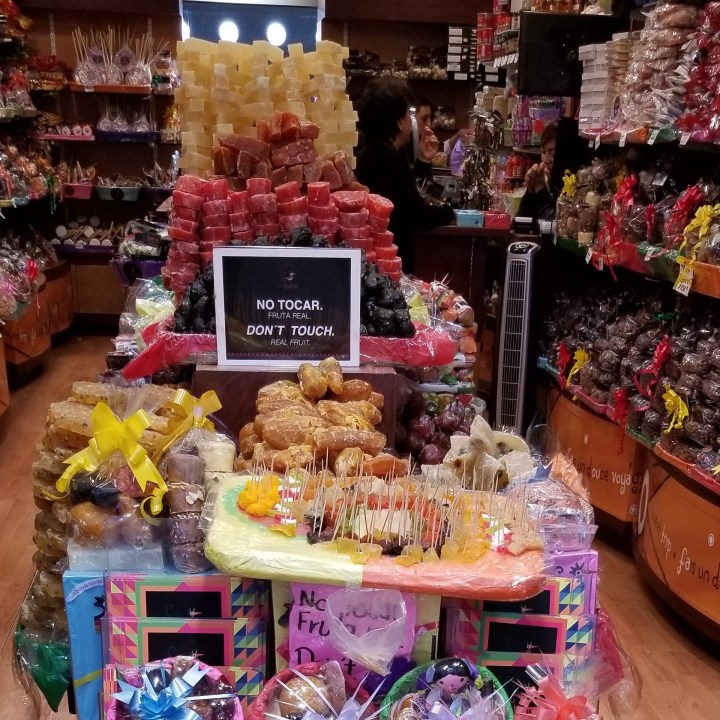
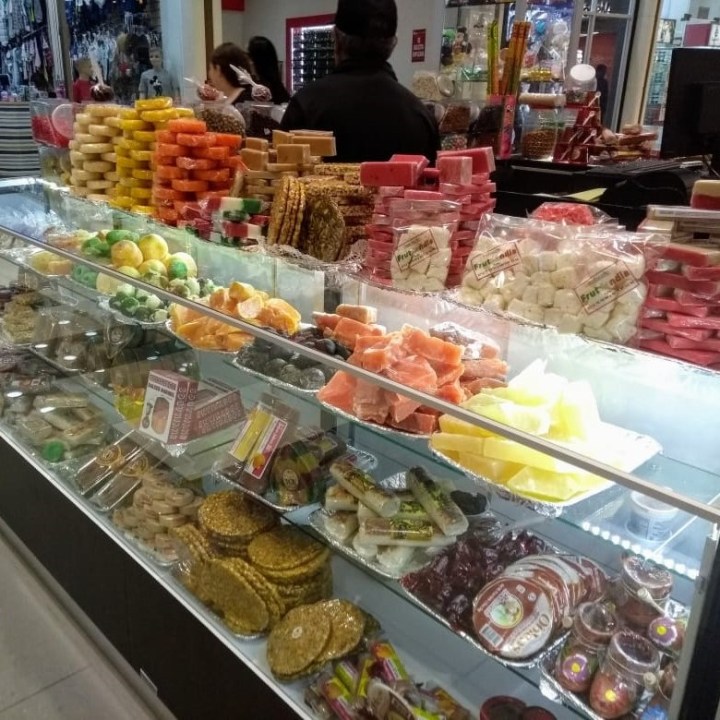







Very interesting presentation. I respect the thoughtfulness that guided your decisions.
Cheers!
Annie
LikeLiked by 1 person
Thank you, Annie!
LikeLike
I appreciate the education and history. The cake this year looks delicious!
LikeLike
Thank you, MsJadeLi!
LikeLiked by 1 person
You are welcome, Irene.
LikeLiked by 1 person
I wasn’t aware of acitron and its interesting history. Thanks for the introduction. Interesting sidelight on foraging for food. Too many of us foraging can endanger wild species.
LikeLiked by 1 person
Mmm. That really looks good!
LikeLiked by 1 person
So many cactus species are threatened. I’m glad to know Mexico is trying to preserve this one. As you point out, it isn’t even the original ingredient for this recipe and there are suitable alternatives.
LikeLiked by 1 person
A beautiful sharing of your tradition of the Ephinany Bread and especially in regard to ensuring that only certified protective growers products be used. It is wonderful that Acitron is being protected. I hope your day and food was how you desired.
LikeLike
It was great, and my daughters took pieces of the bread with them to eat on the actual Epiphany Day. Thank you, Tazzie!
LikeLiked by 1 person